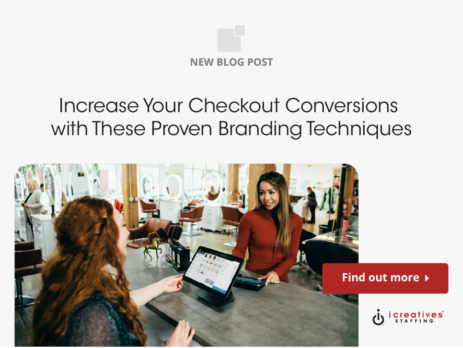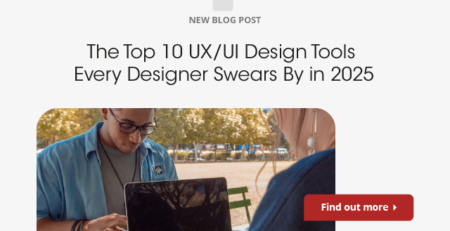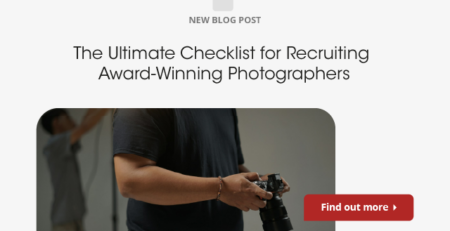Increase Your Checkout Conversions with These Proven Branding Techniques
Enhancing checkout conversions is a pivotal goal for any business operating online. It’s at this final stage of the customer journey where browsing transitions into buying. However, achieving a high conversion rate at checkout isn’t just about the functionality of the cart or the simplicity of the process; it’s also deeply rooted in effective branding. Branding at the checkout stage can significantly influence buyer behavior, encouraging not just the current purchase but fostering loyalty and repeat business.
Branding techniques that resonate with the consumer on a personal level can be the difference between a completed sale and an abandoned cart. This involves a meticulous blend of psychological triggers, visual appeals, and strategic messaging that aligns with the overall brand identity. The power of branding lies in its ability to create a memorable and reassuring presence that reduces purchase anxiety and builds trust.
From the use of colors and logos to the strategic placement of customer testimonials and security badges, every element plays a crucial role. Moreover, personalizing the shopping experience can make the customer feel valued and understood, which increases the likelihood of conversion. This personal touch can be as simple as addressing the customer by name or as complex as offering customized recommendations based on their browsing history.
Furthermore, transparency in pricing, returns, and shipping policies are also part of branding. Clear communication of these elements can prevent last-minute surprises that might deter a customer from completing their purchase. Additionally, optimizing the checkout process for mobile users and ensuring the loading times are minimal can also enhance the user experience, contributing to higher conversion rates.
In this comprehensive guide, we will explore various branding techniques that can be implemented to increase checkout conversions effectively. These strategies are designed to not only improve the immediate transactional metrics but also to build a lasting relationship with the customer, turning them into brand advocates.
Most Asked Questions about Increasing Checkout Conversions with Branding Techniques
- How can visual branding at the checkout influence customer behavior?
- What role does personalized communication play in increasing checkout conversions?
- How important are trust signals at the checkout stage?
- Can offering multiple payment options improve checkout conversions?
- What impact does mobile optimization have on checkout conversions?

How Can Visual Branding at the Checkout Influence Customer Behavior?
Visual branding encompasses the use of design elements that represent the brand’s identity during the checkout process. This includes the strategic use of colors, typography, logos, and other visual cues that align with the brand’s overall aesthetic. The goal is to create a cohesive and immersive experience that reassures customers of the legitimacy and professionalism of the business.
For instance, color psychology plays a significant role in influencing perceptions and behaviors. Blue can evoke feelings of trust and security, making it a popular choice for checkout pages. Similarly, the use of clean, readable typography can make the checkout process easier and more user-friendly, reducing frustration and potential cart abandonment.
Consistency in visual branding helps in building a seamless transition from browsing to buying. When customers see familiar branding elements, it reinforces their confidence in the product and the brand. This consistency should extend to all visual elements displayed during the checkout process, including the shopping cart, checkout forms, and payment confirmation pages.
Moreover, the strategic placement of logos and security badges can also play a crucial role. Displaying well-recognized payment security badges can reassure customers that their transaction is secure, which is crucial in preventing drop-offs due to security concerns.
Additionally, incorporating elements like high-quality images of the product and clear, concise descriptions can help reaffirm the customer’s purchase decision, reducing buyer’s remorse and encouraging the completion of the purchase.
It’s also beneficial to consider the layout of the checkout page. A cluttered or confusing layout can deter purchases. Streamlining the design to focus on essential elements, minimizing distractions, and providing a clear path to completion can significantly enhance the user experience and increase conversions.
Implementing A/B testing for different visual elements can provide valuable insights into what works best for your target audience. This data-driven approach allows businesses to optimize their checkout design based on actual customer preferences and behaviors.
Ultimately, effective visual branding at the checkout isn’t just about aesthetics; it’s about creating an environment that fosters confidence, clarity, and comfort for the customer. By carefully designing this last phase of the customer journey, businesses can significantly improve their checkout conversions.

What Role Does Personalized Communication Play in Increasing Checkout Conversions?
Personalized communication during the checkout process can dramatically enhance the customer’s experience and increase the likelihood of conversion. This personalization can range from addressing the customer by name to providing tailored recommendations or exclusive offers based on their browsing and purchase history.
Addressing customers by name in emails or on the checkout page itself can make the interaction feel more personal and engaging. This simple gesture shows that the business values the customer as an individual, which can enhance their emotional connection to the brand.
Further personalization can be achieved by analyzing the customer’s purchase history and browsing behavior. This data can be used to offer relevant add-ons or complementary products. For instance, if a customer is purchasing a camera, showing them related products like memory cards or camera cases at checkout can increase the average order value and improve user satisfaction.
Exclusive offers or discounts can also be personalized. For example, offering a first-time purchase discount or a special birthday discount can make the customer feel appreciated and more inclined to complete the purchase.
Personalized reminders for items left in the cart can also be effective. Sending a tailored email reminding the customer of what they’ve left behind, possibly with a small discount or free shipping offer, can encourage them to return and complete the purchase.
Feedback requests post-purchase can also be personalized. Asking customers for their opinions on the checkout process and what improvements they would like to see can provide valuable insights for further personalization and optimization.
It’s important to strike the right balance in personalized communication. Over-personalization can sometimes feel intrusive, so it’s crucial to maintain a level of subtlety and respect for the customer’s privacy. Ensuring that all personalization efforts are in compliance with data protection regulations is also essential.
Implementing tools like CRM software can aid in managing customer data and automating personalized communications. This technology can help in crafting messages that are not only personalized but also timely and relevant, enhancing the overall effectiveness of the strategy.
In conclusion, personalized communication is a powerful tool in increasing checkout conversions. By making the process more relevant and engaging for the customer, businesses can enhance satisfaction and loyalty, ultimately driving higher conversion rates.
How Important Are Trust Signals at the Checkout Stage?
Trust signals at the checkout stage are crucial for alleviating customer concerns about security and reliability, which can significantly impact conversion rates. These signals can come in various forms, such as SSL certificates, security badges, and transparent customer service policies.
SSL certificates are a fundamental trust signal, ensuring that all data passed between the web server and browsers remain private and integral. Displaying an SSL secure badge at the checkout can reassure customers that their personal and payment information is safe from interception.
Security badges from recognized authorities like VeriSign or McAfee can also provide reassurance. These badges indicate that the website meets specific security standards, reducing the perceived risk of data breaches.
Transparent customer service policies are equally important. Clearly stating return policies, money-back guarantees, and customer service contact information can help build trust. Customers are more likely to complete a purchase if they feel that they can easily reach out for support and that there are fair policies in place should they need to return the product.
User reviews and testimonials can also serve as powerful trust signals. Displaying positive reviews and testimonials from previous customers can reassure potential customers of the product quality and customer satisfaction. It’s also beneficial to include a variety of opinions to ensure authenticity and trust.
Live chat features can further enhance trust by providing immediate assistance. If a customer has a last-minute question or concern, a quick conversation with a customer service representative can be the deciding factor in whether they complete the purchase.
Payment options also play a role in trust. Offering multiple, well-known payment methods can cater to the preferences of different customers and signal that the checkout process is flexible and customer-focused.
Consistency in branding across all touchpoints, including the checkout page, reinforces reliability and professionalism. A consistent brand image can make the business appear more legitimate and trustworthy.
Finally, keeping the checkout process simple and transparent can prevent confusion and build trust. Avoiding hidden fees and ensuring that the customer can easily see itemized costs contribute to a transparent and trustworthy checkout process.
Overall, trust signals are indispensable at the checkout stage. They not only comfort the customer about their immediate purchase but also build long-term trust that can convert first-time buyers into loyal customers.
Can Offering Multiple Payment Options Improve Checkout Conversions?
Offering multiple payment options at the checkout can significantly improve conversion rates by catering to the diverse preferences and needs of customers. It’s about providing convenience, security, and flexibility, which can be the deciding factor for many customers when completing a purchase.
Traditional payment methods like credit and debit cards are essential, but including options like PayPal, Apple Pay, or Google Wallet can cater to customers who prefer not to enter their card details directly into a website. These services provide an additional layer of security and often simplify the checkout process, which can reduce cart abandonment.
Buy now, pay later services are becoming increasingly popular, especially among younger consumers. Offering this option can attract a demographic that prefers not to pay the full amount upfront. These services also typically offer some form of consumer protection, which can further reassure customers and encourage purchases.
Bank transfers and on-delivery payments might be preferred by customers who are wary of online transactions. Providing these options can capture a segment of the market that might otherwise be inaccessible.
Cryptocurrency is another payment method that, while not yet mainstream, is gaining traction among certain consumer segments. Offering cryptocurrency payments can not only cater to this market but also position your brand as forward-thinking and innovative.
It’s important to consider the geographical location of your customers as well. Different regions may have preferences for certain payment methods. For instance, digital wallets like Alipay are popular in China, while direct bank transfers are more commonly used in Europe.
Displaying familiar payment method logos can also serve as a trust signal, reassuring customers that the checkout process is secure and that their preferred payment method is accepted.
However, it’s crucial to balance the number of options with the user experience. Too many choices can overwhelm the customer and complicate the checkout process. It’s important to analyze customer data to determine which payment methods are most popular among your target audience and focus on those.
Integrating these payment options seamlessly into the checkout process is also key. The transition to the payment gateway should be smooth, with clear instructions and minimal loading times.
In conclusion, offering multiple payment options can definitely improve checkout conversions. By accommodating the diverse preferences of customers, businesses can enhance the checkout experience, reduce abandonment, and increase overall sales.
What Impact Does Mobile Optimization Have on Checkout Conversions?
Mobile optimization is critical in today’s digital landscape, where a significant portion of online shopping is done via smartphones and tablets. A mobile-optimized checkout process can greatly enhance user experience, leading to higher conversion rates.
The first step in mobile optimization is ensuring that the website is responsive. This means that the layout and content dynamically adjust to fit the screen size of the device being used. A responsive design ensures that the checkout process is as seamless on a mobile device as it is on a desktop.
Touch-friendly interfaces are also essential. Buttons, forms, and other interactive elements should be easy to navigate using touch controls. Oversized buttons, simplified forms, and minimal text entry can reduce errors and speed up the checkout process.
Page load times are particularly crucial on mobile devices. Mobile users are often on-the-go, and a slow-loading page can lead to frustration and abandonment. Optimizing images, leveraging browser caching, and minimizing code can help in achieving faster loading times.
Another aspect of mobile optimization is the integration of mobile payment systems like Apple Pay or Google Pay. These systems allow users to pay using their mobile devices without the need to enter payment details manually, offering a quicker and secure payment option.
Location-based services can also enhance the mobile checkout experience. For instance, auto-filling billing and shipping information based on the user’s location can streamline the process and reduce the effort required to complete a purchase.
It’s also important to consider the visibility of trust signals on mobile. Security badges, return policies, and customer service contact information should be clearly visible to reassure mobile users of the security and reliability of the checkout process.
Mobile-specific promotions can also be an effective way to increase conversions. Offering special discounts or free shipping for orders placed via the mobile app or website can incentivize users to complete their purchase on their mobile devices.
Regular testing on various devices and browsers is essential to ensure that the mobile checkout experience is consistently smooth and functional. This includes testing on both Android and iOS platforms to cover a broad range of mobile users.
In conclusion, mobile optimization can have a profound impact on checkout conversions. By providing a fast, secure, and user-friendly checkout experience on mobile devices, businesses can cater to the growing number of mobile shoppers and significantly boost their sales.
Conclusion
Increasing checkout conversions is a multifaceted challenge that requires a deep understanding of branding, customer behavior, and technology. The strategies discussed here—from enhancing visual branding to optimizing for mobile devices—highlight the importance of a customer-centric approach in the checkout process.
Implementing these techniques involves not only understanding what attracts and retains customers but also continuously testing and refining the strategies to suit changing consumer preferences and technological advancements. The role of personalization and trust signals, for instance, will continue to evolve, and staying ahead of these trends is crucial.
Moreover, the integration of various payment options and ensuring a seamless mobile experience are not just enhancements but necessities in the modern digital shopping landscape. These elements are crucial in providing a flexible and inclusive shopping experience that can meet the needs of a diverse customer base.
Ultimately, the goal is to create a checkout experience that is as enjoyable and reassuring as it is efficient and secure. By focusing on these aspects, businesses can not only increase their checkout conversions but also build lasting relationships with their customers, encouraging loyalty and repeat business.
For more insights on enhancing your business strategies, consider exploring resources such as how to conduct a performance review or how to know if your salary is competitive. These can provide additional perspectives on managing and optimizing various aspects of your business operations.
Remember, the key to successful checkout conversions lies in continuously adapting and responding to the customer’s needs and preferences. With the right strategies in place, you can ensure that your checkout process contributes positively to your overall business goals.
In today’s competitive market, finding the right creative and marketing expert can be a challenge. But with icreatives, you’re in experienced hands. With 37 years in staffing and a track record of matching more than 10,000 employees to over 1,000 companies worldwide, we know how to connect you with the best. Plus, you only pay if you hire—there’s no risk, only results.Ready to find your perfect creative or marketing expert? HIRE WITH ICREATIVES today!












